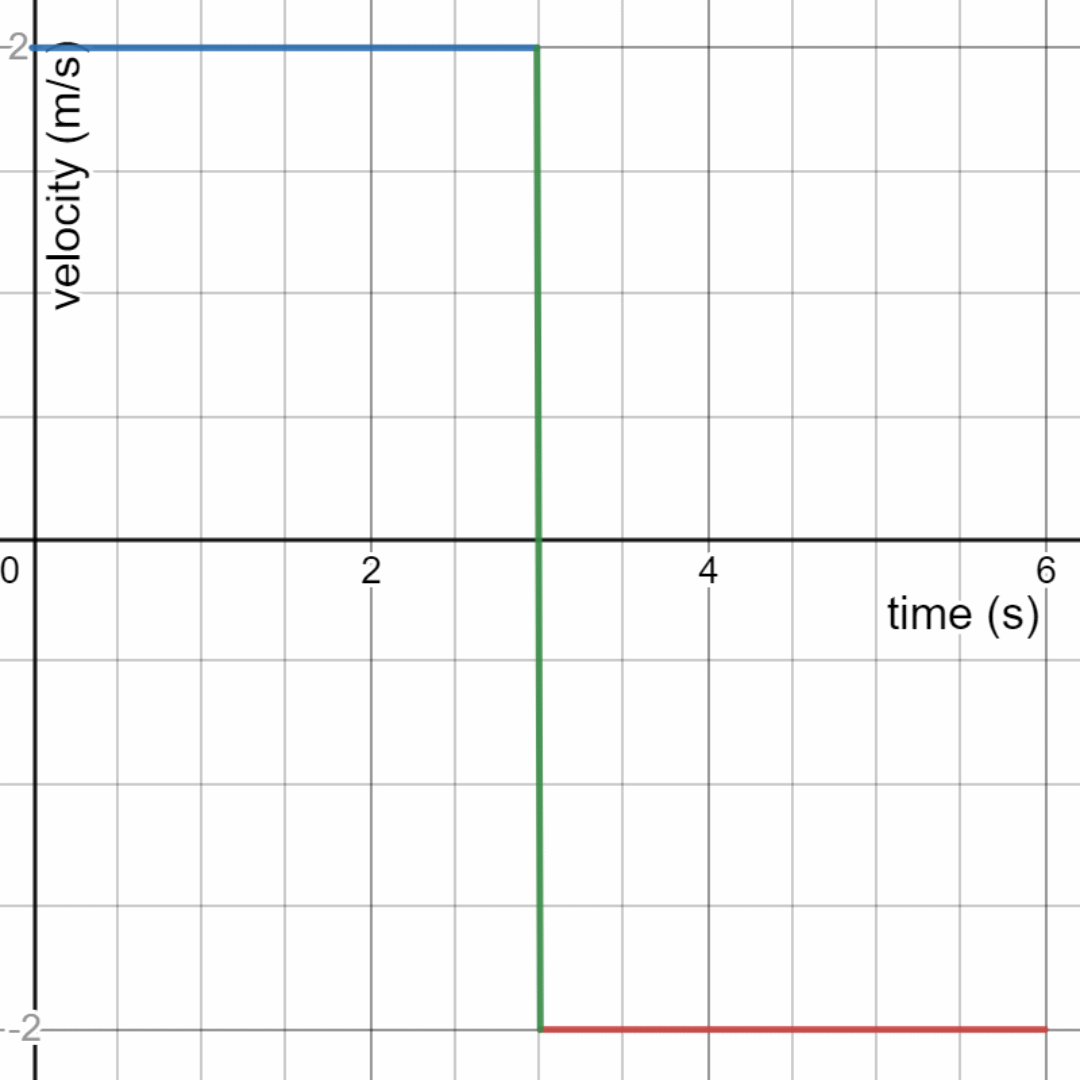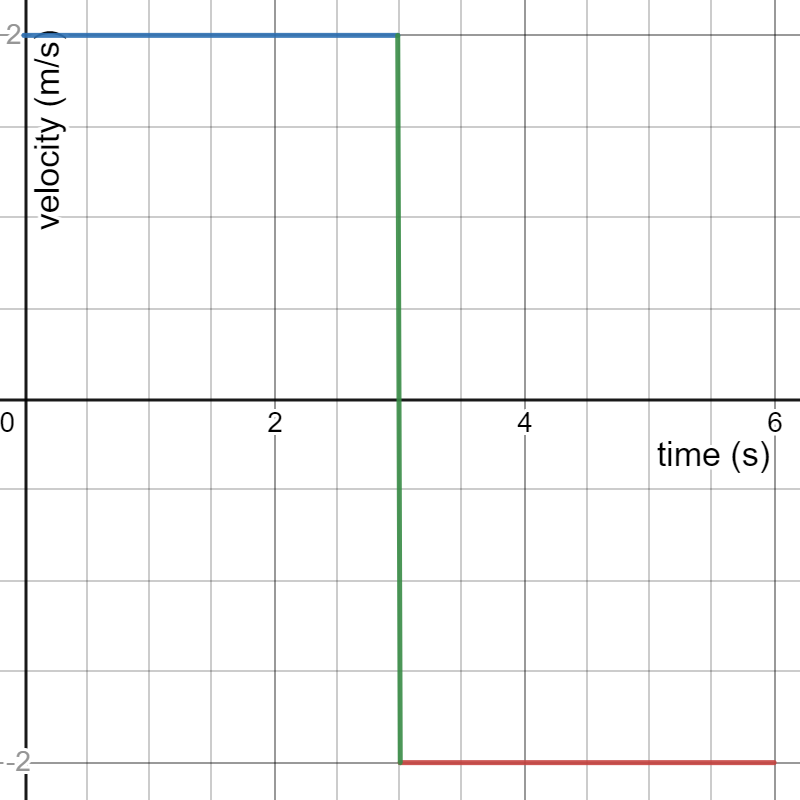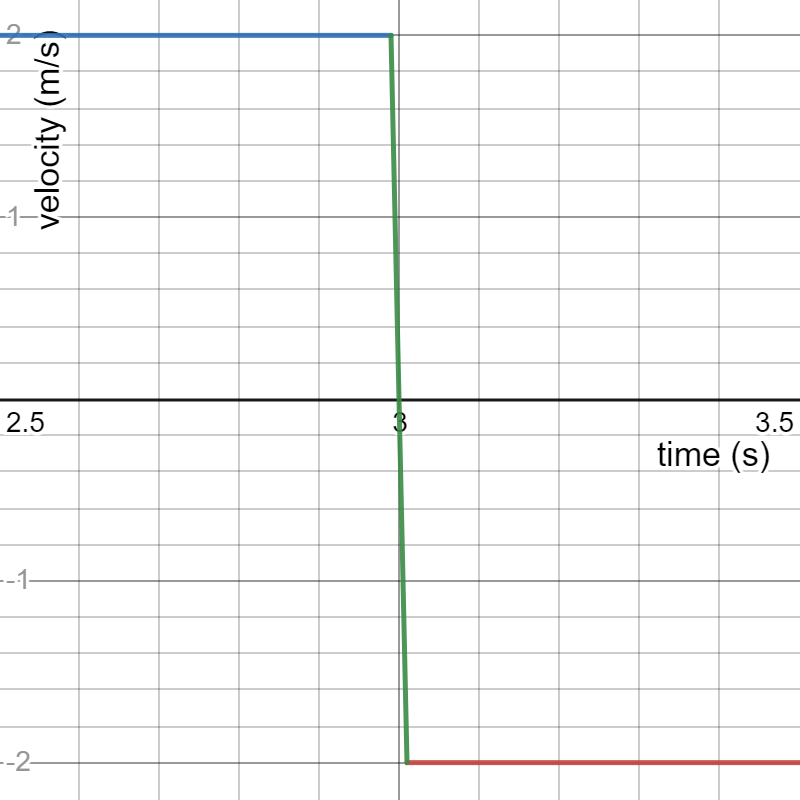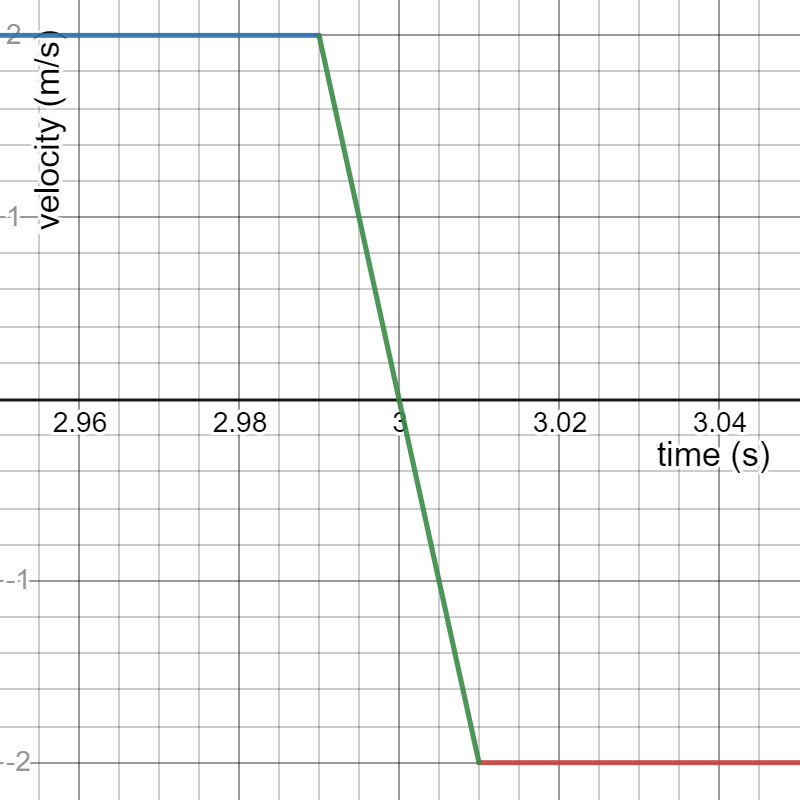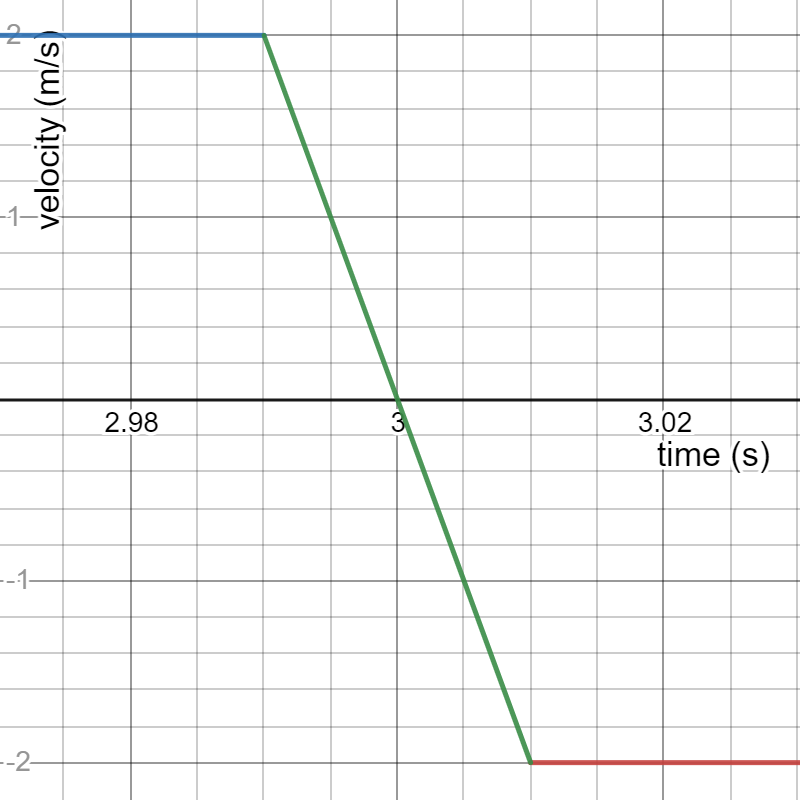In a Facebook physics educator group, a member asked the following question:
First time physics teacher here with a graphing question- What would a velocity vs time graph look like if a car was to change direction without slowing down? I got this question and was not able to answer it. Thanks for your help!
This raised a good conversation about this frequent scenario in physics classes. The reality if that this can never actually happen. There must be a short time interval while the force is applied to change the object’s velocity and momentum.
Let’s say, for example, a mosquito flying towards you at 2 m/s collides with you and sticks to you. You are moving -2 m/s. Let’s assume the collision lasts 0.02 seconds. Since you have so much more mass than the mosquito, you barely feel the collision, but the poor mosquito has an acceleration of -200 m/s/s
This problem is often presented using a vertical line to shift from the positive velocity to the negative. But let’s zoom in on small 2/100ths of a second:
As you can see, as we zoom in on the moment of collision, the actual slope of the acceleration begins to appear.
So, do I have an answer for the question? The reality is no, I don’t. Certain tests will expect you to draw the graph using a vertical line, and to some degree that’s fine. I just hope that my graph above helps folks to better understand the meaning of a ‘vertical’ line on a velocity/time graph.
